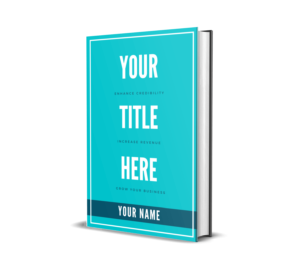How to Write A Book Description That Sells
You’ve done it! You have written a book and published it for the world to see. It feels good, doesn’t it? There’s just one problem: you need to write a book description that sells.
You can spend all the money in the world on advertising to get eyes to your book’s landing page, but that doesn’t guarantee sales. The first thing a potential reader will look at is your cover.
If you pass that test, then it’s on to the book description. This needs to convert potential readers into buyers. It needs to be engaging. It needs to sell.
But there’s a catch. Your book description not only has to satisfy the human eye, it also has to satisfy computer algorithms.
Want to write a book in 2022?
The Computer Aspect
First, the computer aspect of your book description: keywords. Everything revolves around keywords. If you’re in business, you already know how important they are to your marketing efforts.
When used properly, keywords can rise you in the ranks of search engines, all the way up to the top of the first page. Used incorrectly, however—or not at all—and you could find yourself pushed down to page ten, twenty, fifty, or several hundred pages down on such pages.
Know anyone who has spent the time to go through more than two or three pages of search engine results? Of course not.
There are two ways to get onto the first page of search engine results—paid ad placement or organic search. The first you will pay for, sometimes handsomely. The second is free, but you need to use keywords tactically.
There are two things you will need to know. The first is where to find keywords. Sites like SEMrush, Google Keyword Planner, and Ahrefs can be used to find how often key words and phrases are searched.
Which keywords in your industry get the most traction? How high are they on the search charts?
Include some of these important, common keywords, but also remember there’s a ton of competition at the top. Use some niche keywords, too. Search for the ones that only have a few hundred searches.
These can give you a much better chance of getting a potential reader to your page because it brings them to something they were specifically looking for.
The Human Component
Let’s face it: your reader has too many options. We all have too many options. For everything.
You had options to review similar articles before landing on this one, didn’t you? Each of our competitors has published similar content. But there was something in particular that sold you on the idea of clicking on this article.
Your prospective reader’s mind moves quickly. If your description doesn’t seem worthwhile, they’ll move along, which is why you need to write a book description that sells.
You, too, have probably done this on the Amazon page of some product. Maybe it was a book, maybe it wasn’t. Whatever the case, something about the product’s listing threw you off, and the description wasn’t written well enough to compel you to buy.
If you want your book to stand out from the millions of others available to your potential reader, you need to make it pop. An appealing cover design is a great start, but the book’s description needs to seal the deal. Here’s how it can do so.
- Target your reader’s pain points. Open with this. Make the first few sentences relatable. Tell the reader that he or she is not alone in their feelings of pain, doubt, etc.
- Explain the transformation this book will provide. Don’t provide the method, your book will do that. Simply tell the reader what their life will be like once they have read the book and implemented the strategies within.
- Use italic and bold fonts to distinguish important text. Most people will only skim through your text. Time is the most valuable asset for all of us, so we try to savor it. If your description is written in long, daunting paragraphs, you will almost certainly lose your potential reader.
- Add compelling reviews at the top of your product page. Did you receive some great reviews for your book? Or blurbs from important people or companies? Highlight those at the top of your book’s description on the product page. Excite your potential buyer from the very first sentence.
Writing A Great Description
Now it’s time to combine the two. Start with the human component in mind and write a description of about 200 words that sounds appealing. Then, run through the description and look for places where keywords can be used in place of the natural text.
Write your book and have it published to Amazon, Barnes & Noble, and more…
Be careful here not to “keyword stuff” your description, or overused keywords to a point where the description is almost impossible to read. Amazon could penalize your title for doing so (the computer component) and it can come across as ridiculous (the human component).
Plus, will someone really be enticed to buy a book with a spammy description? Sure, keyword stuffing might get your book to the top of a search engine result, but that doesn’t matter if nobody is buying. Actually, according to Amazon’s search engine algorithm, a book page with many clicks and few purchases will be pushed lower in the rankings. To Amazon, that combination is a red flag.
Avoid keyword stuffing at all costs.
Want some inspiration on how to write a book description that sells? Search for bestselling books and read through their descriptions. Then, go deep into the rankings and look at descriptions of books that aren’t selling. That should give you a good idea of where to begin.
Outsourcing Your Description
Description writing versus book writing—there’s a definite difference. In marketing, it’s called copywriting versus content writing. They are two completely different methods of writing. Don’t get discouraged if it takes you days or weeks to finally settle on a 200-word book description.
But I could write 200 words in my manuscript in less than an hour!
We know. Believe us, we know. Creative writing and copywriting are two different things. Copywriting, as you know from your business’s marketing efforts, is all about selling. And selling just comes naturally to some while others struggle with it.
If you know the content inside your book is helpful but you’re struggling with how to write a book description that sells, one option you have is to hire. We write these book descriptions for our clients, but we only do so for clients. Unfortunately, we don’t offer this service as a single, one-off option.
Luckily, the process to hire a writer today is quick and simple. Reedsy, Upwork, or even Fiverr can provide you with wide pools of talent from which to select.
Need help getting started with your nonfiction book project? We’re here and ready to help.
Speak with one of our publishing experts to learn more about the steps you need to take to become a published author.


